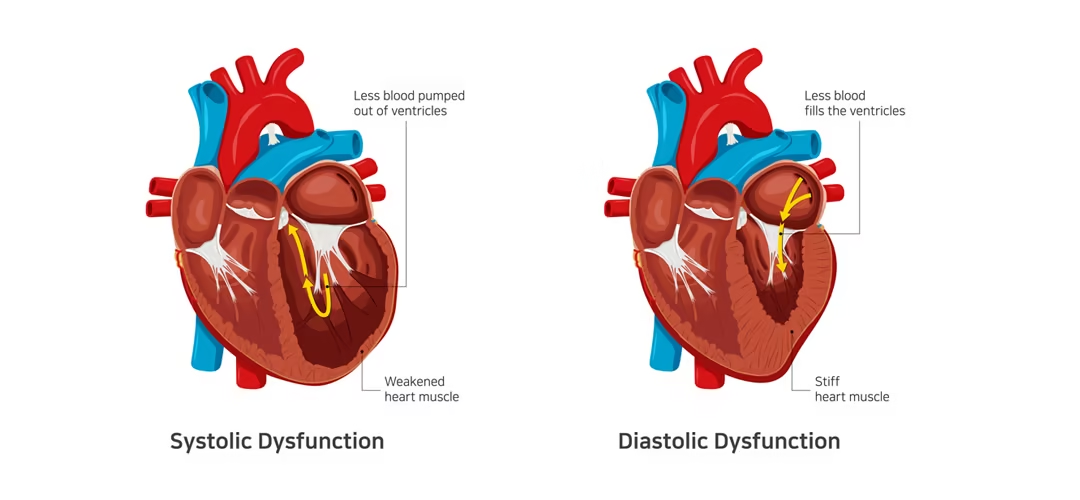
Types of Heart Failure: Understanding the Different Forms
Heart failure is a serious condition that affects millions of people worldwide. Despite its name, it doesn’t mean the heart has completely stopped working. Instead, it indicates that the heart is no longer able to pump blood efficiently to meet the body’s needs. There are several types of heart failure, each with its own causes, symptoms, and treatment approaches. Understanding these types can help in early detection and effective management.
What Is Heart Failure?
Heart failure occurs when the heart muscle becomes too weak or stiff, limiting its ability to circulate blood properly. As a result, oxygen and essential nutrients fail to reach the body’s organs and tissues. Over time, this can lead to serious complications.
There are three main types of heart failure:
- Left-sided heart failure
- Right-sided heart failure
- Congestive heart failure
Each type can vary in severity and may present differently based on its underlying cause.
1. Left-Sided Heart Failure
This is the most common type of heart failure. It occurs when the left side of the heart, which pumps oxygen-rich blood to the rest of the body, becomes weakened or stiff.
Two Subtypes of Left-Sided Heart Failure:
- Systolic heart failure (HFrEF): The heart muscle loses its ability to contract forcefully, meaning it can’t pump blood out effectively. This form is called “heart failure with reduced ejection fraction.”
- Diastolic heart failure (HFpEF): The heart muscle becomes stiff and can’t relax properly, reducing its ability to fill with blood. This is known as “heart failure with preserved ejection fraction.”
Common Symptoms:
- Shortness of breath during activity or rest
- Persistent cough or wheezing
- Fatigue and weakness
- Swelling in ankles, legs, or abdomen
Left-sided heart failure often leads to fluid buildup in the lungs, making breathing more difficult.
2. Right-Sided Heart Failure
This type occurs when the right ventricle is unable to pump blood to the lungs efficiently. It often results from left-sided heart failure, which increases pressure in the lungs, overworking the right side of the heart.
However, right-sided heart failure can also be caused by lung diseases such as chronic obstructive pulmonary disease (COPD) or pulmonary hypertension.
Symptoms Include:
- Swelling in the legs, ankles, and feet
- Abdominal swelling and discomfort
- Increased need to urinate at night
- Weight gain from fluid retention
Right-sided heart failure causes blood to back up in the veins, leading to congestion and swelling in the lower body.
3. Congestive Heart Failure (CHF)
Congestive heart failure is a broad term that refers to the fluid buildup resulting from either left- or right-sided heart failure—or both. It’s called “congestive” because the heart’s inability to pump properly causes fluid to accumulate in the lungs, liver, abdomen, and lower extremities.
CHF can be acute or chronic:
- Acute CHF happens suddenly and may be caused by a heart attack or valve issue.
- Chronic CHF develops over time and is usually associated with other long-term heart conditions.
Symptoms to Watch:
- Difficulty breathing, especially when lying down
- Swollen legs and feet
- Rapid weight gain from fluid
- Irregular or rapid heartbeat
Congestive heart failure requires ongoing treatment, including medications, lifestyle changes, and in some cases, surgical interventions.
Causes of Heart Failure
Several underlying conditions can lead to different types of heart failure. These include:
- Coronary artery disease (CAD)
- High blood pressure
- Diabetes
- Heart valve disorders
- Cardiomyopathy
- Arrhythmias
While not all heart failure can be prevented, managing risk factors greatly lowers the chances of developing it.
Diagnosing Heart Failure
Doctors use a combination of tests to determine the type and severity of heart failure. These may include:
- Echocardiogram: Assesses ejection fraction and heart function
- Chest X-ray: Detects fluid in the lungs
- Electrocardiogram (ECG): Measures heart rhythm and detects abnormalities
- Blood tests: Check for markers of heart damage and kidney function
Once diagnosed, the specific type of heart failure guides the treatment plan.
Treatment Options Based on Type
For Left-Sided Heart Failure:
- ACE inhibitors or ARBs to relax blood vessels
- Beta-blockers to reduce heart workload
- Diuretics to reduce fluid buildup
- Lifestyle changes like reduced sodium intake and regular exercise
For Right-Sided Heart Failure:
- Treating the underlying lung condition
- Diuretics to manage swelling
- Oxygen therapy if related to lung issues
Congestive Heart Failure:
- A combination of medications, lifestyle modifications, and sometimes devices like pacemakers or defibrillators
- In severe cases, heart surgery or transplantation may be necessary
Living with Heart Failure
Although heart failure is a chronic condition, many individuals live long and productive lives with proper management. Early diagnosis, regular follow-ups, and strict adherence to treatment can significantly improve quality of life.
It’s also important to:
- Monitor symptoms closely
- Maintain a heart-healthy diet
- Limit alcohol and avoid tobacco
- Stay physically active within recommended limits
Support from healthcare providers, caregivers, and lifestyle changes make a major difference.
Understanding the types of heart failure—including left-sided, right-sided, and congestive—can help individuals and families recognize warning signs and seek early treatment. Each form has unique symptoms and treatment strategies, but all share the goal of improving heart function and enhancing quality of life.
If you or a loved one experiences symptoms of heart failure, consult a healthcare professional immediately. With the right care, heart failure can be managed effectively.








